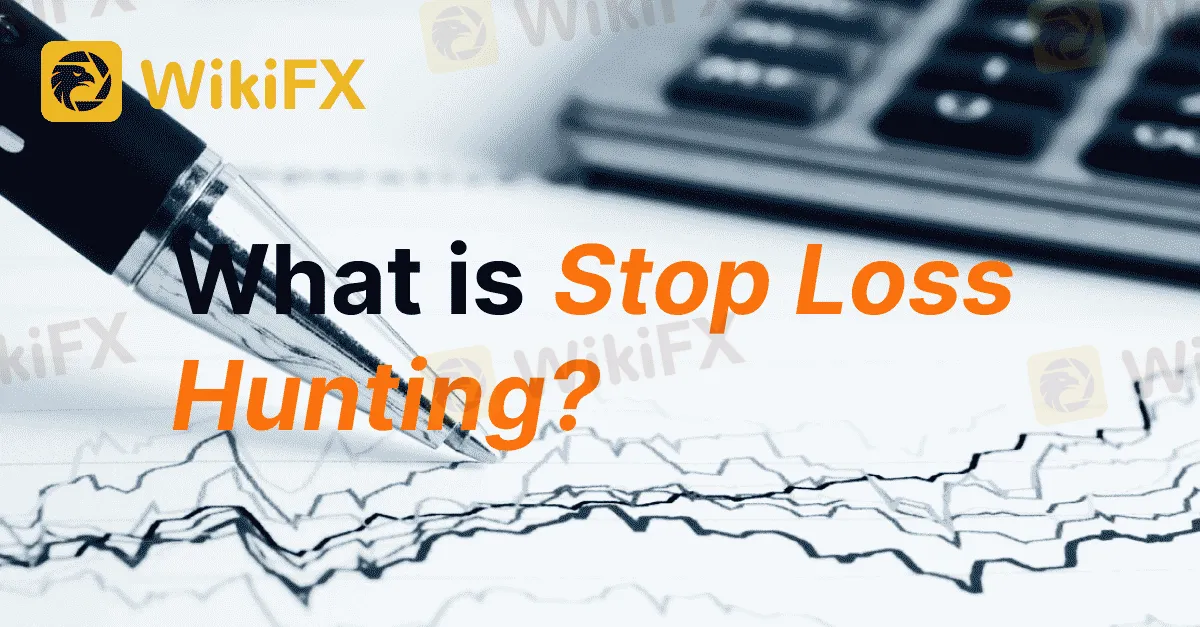简体中文
繁體中文
English
Pусский
日本語
ภาษาไทย
Tiếng Việt
Bahasa Indonesia
Español
हिन्दी
Filippiiniläinen
Français
Deutsch
Português
Türkçe
한국어
العربية
What is Stop Loss Hunting?
Abstract:The phenomenon known as "stop loss hunting" is often discussed among traders when describing market price movements, especially when trades don't go as planned. Traders may exclaim, "They got my stop loss!" However, it's important to understand stop loss hunting in a more precise manner to effectively manage risk and develop trading strategies.

The phenomenon known as “stop loss hunting” is often discussed among traders when describing market price movements, especially when trades don't go as planned. Traders may exclaim, “They got my stop loss!” However, it's important to understand stop loss hunting in a more precise manner to effectively manage risk and develop trading strategies.
While not all market movements can be attributed to stop loss hunting, it is beneficial for traders to grasp its rationale and mechanics. Stop-loss hunting is the act of deliberately triggering stop-loss orders, and although its existence is real, its impact is often more nuanced in financial markets. Liquidity providers are obligated to offer tradable prices, but they are not required to move them in a smooth and incremental manner. Stop loss hunting can be compared to gravity – invisible but with a noticeable effect.
The blame for stop-loss hunting is primarily directed at major financial institutions, including large brokers, dedicated market-making liquidity providers, and speculators. Various complex factors can cause a market to abruptly move through a technical price level, but it is rarely intended to target individual clients with stop-loss orders. However, powerful financial entities possess the resources to temporarily disrupt the market by pushing prices to levels where they anticipate triggering many stops placed by traders.
Stop loss hunting aims to eliminate active positions from the market and can weaken established support and resistance levels. Market makers may engage in this practice to generate profits and protect their positions against developing trends. Forex and commodities are two asset classes that are particularly susceptible to stop loss hunting, but it can also occur in other markets where derivatives allow for long and short positions.
Stop-loss orders are utilized by a wide range of speculators, both large and small, including day traders who use them to manage risk and protect against sudden trend reversals. Day traders often choose stop-loss levels based on technical indicators that have shown durable support or resistance within a specific timeframe.
The financial markets are filled with stop-loss orders, and institutional players, even without access to brokers' order books, have a good understanding of potential accumulation points where client stop losses are likely to be placed. Market-making brokerage firms that find themselves imbalanced in terms of risk exposure (either long or short) may have the incentive to eliminate positions and ensure financial stability. However, it's crucial to note that such actions can create unwarranted anxiety among small traders. While brokers with a significant institutional presence theoretically have the ability to engage in stop-loss hunting, it is important to recognize that not all institutions employ these practices and resort to them only when necessary.

Disclaimer:
The views in this article only represent the author's personal views, and do not constitute investment advice on this platform. This platform does not guarantee the accuracy, completeness and timeliness of the information in the article, and will not be liable for any loss caused by the use of or reliance on the information in the article.
Read more

WikiFX Elite Club Committee Makes Its Debut, Charting the Future of the Global Trading Ecosystem
November 11, 2025 – The WikiFX Elite Club Committee (hereafter “the Elite Committee”) made its significant debut on the international stage at WikiEXPO Dubai 2025. Core members from the Middle East, Southeast Asia, and Chinese-speaking regions gathered to witness the beginning of a new chapter for the Elite Club.

WikiEXPO Dubai 2025 Concludes Successfully — Shaping a Transparent, Innovative Future
On November 11, WikiEXPO Dubai 2025, hosted by WikiGlobal and co-organized by WikiFX, successfully concluded. As one of the world’s most influential Fintech expos, this event brought together more than 570 regulatory representatives, industry leaders, and innovation pioneers from across the globe. Through in-depth discussions on core issues such as regulatory compliance, the forex market, investment strategies, and sustainable finance, the event delivered a profound experience that masterfully blended intellectual depth with actionable insights.

Russian crypto millionaire couple found dismembered and buried in Dubai desert
A gruesome case has emerged involving a Russian couple living in the United Arab Emirates who went missing in early October and whose remains were recently discovered in a desert near Dubai. Roman Novak, a self-styled cryptocurrency “millionaire”, and his wife Anna had last been seen travelling to a supposed investor meeting in the UAE, but according to investigators were instead abducted and murdered after a ransom plot failed.

Webull Introduces AI-Powered Decision Partner “Vega” to Elevate Investor Intelligence
An online investment platform named Webull, has unveiled Vega, the next evolution of its AI-powered decision partner, designed to deliver deeper, personalized insights that help investors navigate the ever-changing financial markets with confidence.
WikiFX Broker
Latest News
Forex Expert Recruitment Event – Sharing Insights, Building Rewards
Admirals Cancels UAE License as Part of Global Restructuring
Moomoo Singapore Opens Investor Boutiques to Strengthen Community
OmegaPro Review: Traders Flood Comment Sections with Withdrawal Denials & Scam Complaints
An Unbiased Review of INZO Broker for Indian Traders: What You Must Know
Is Fyntura a Regulated Broker? A Complete 2025 Broker Review
PINAKINE Broker India Review 2025: A Complete Guide to Safety and Services
Is Inzo Broker Safe or a Scam? An Evidence-Based Analysis for Traders
Is Uniglobe Markets Legit? A 2025 Simple Guide to Its Safety, Services, and User Warnings
Is Forex Zone Trading Regulated and Licensed?
Currency Calculator



